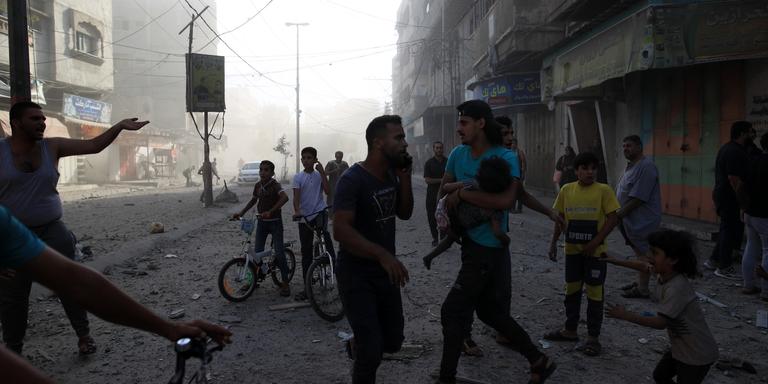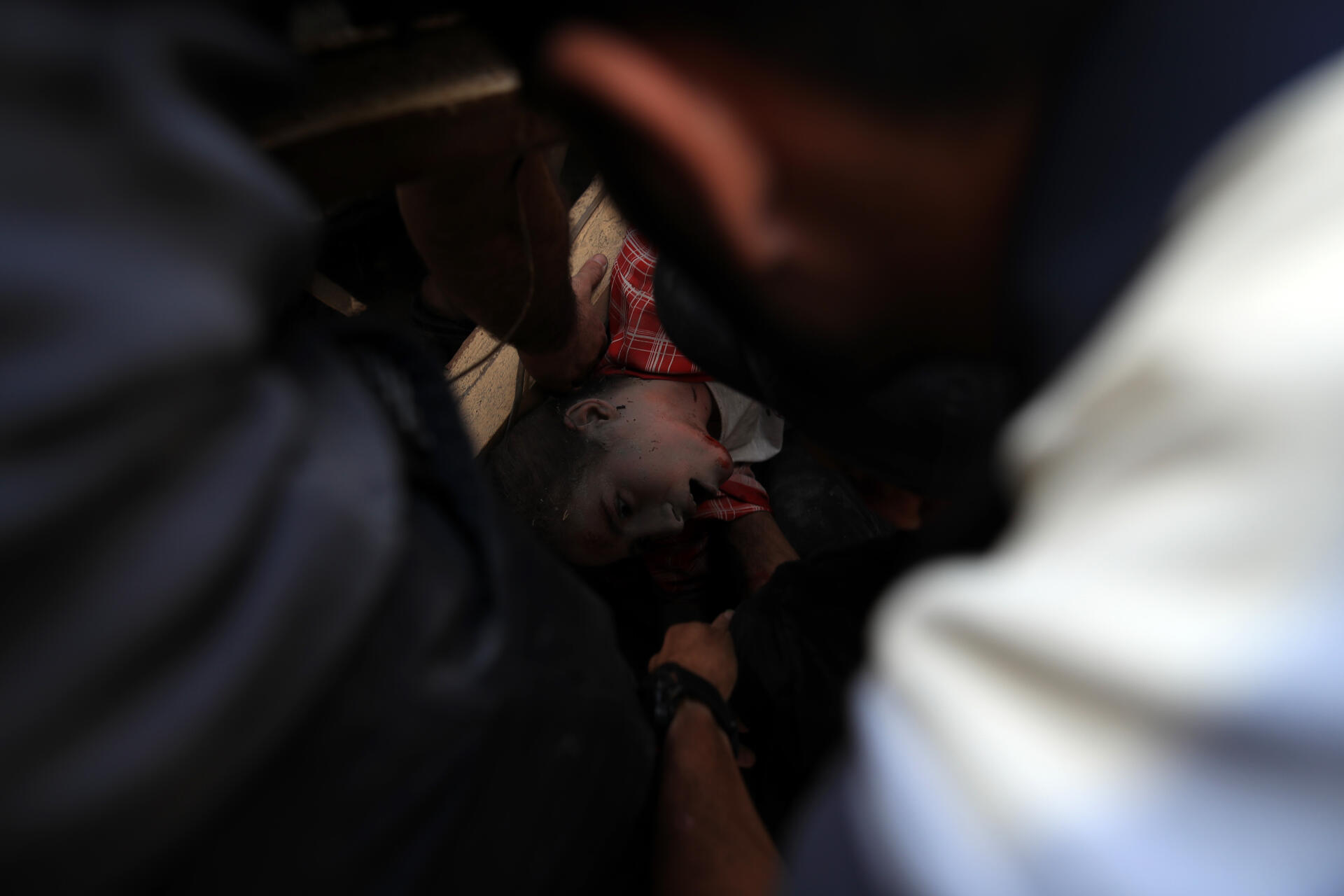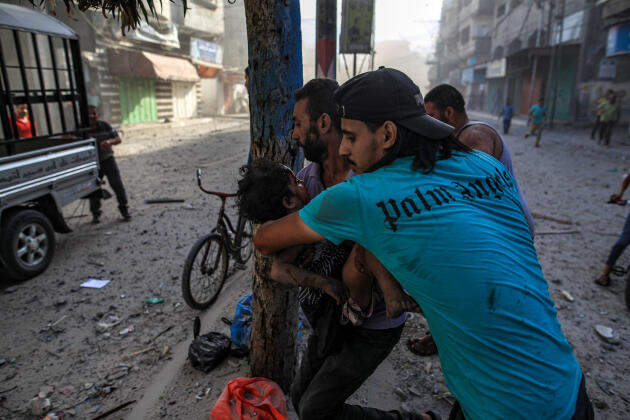


In devastated Gaza, a photographer recounts the stories of the dead and displaced
Long ReadMohammed Zaanoun is a 37-year-old Gazan photographer. For 'Le Monde,' he has taken photos of inhabitants who, like him, have had to abandon their homes under Israeli bombing.
Every day for the past two weeks, Mohammed Zaanoun has been getting into his car and driving from gutted buildings to smoking ruins, photographing the devastation of the Gaza enclave under Israeli bombing.
"Everywhere on the road, I witness the bombings, constantly hearing explosions. I see the missiles strike. Wherever you look, you see destroyed buildings. In the streets, you can smell the remains of martyrs, gunpowder, fire and death. There are more than 1,000 bodies trapped under the rubble because there are too few rescue workers to cope with the scale of the bombing. These workers, the medical teams, my journalist friends: Everyone is a target, and many have been killed," said the Gazan photographer on the phone, affable despite sleepless nights, constant fear and grief.
Some of the scenes he has witnessed will probably never fade from his memory, like a little girl calling for her family, trapped under the rubble of her house in the Zeitoun district of Gaza City.


The cold accounting of the figures says nothing about the scale of the tragedy. According to the Hamas-run Gaza Ministry of Health, more than 4,100 people, mostly civilians, have been killed in two weeks of bombardments by the Israeli army, and over 13,100 wounded.
The Israel Defense Forces, Tzahal, have continued their bombing. Israel is determined to destroy Hamas, the movement that runs the enclave, after its bloody attack on the Jewish state on October 7, killing 1,400 people and taking over 200 hostages back to Gaza. The Israeli offensive is accompanied by a state of siege: Nothing has been allowed in or out of the enclave for two weeks. Gaza had already been weakened by 16 years of blockade. Now, more than a million Gazans have been displaced by the shelling. Zaanoun is one of them.
His house, on the northern edge of Gaza City, not far from the seafront, was destroyed. His son was slightly wounded in a bomb strike. He moved his family to his in-laws' home in the Al-Rimal neighborhood, which was partly destroyed last week, and then to his sister's house. They are now refugees in the south, in Rafah, staying with one of his wife's relatives. When they arrived, "the house was in mourning": their host had just lost part of his family in a bombardment.
Zaanoun is hiding from his four children the fact that their home is now nothing but a pile of rubble: "I tell my daughter that I'll go and get her bike later, that I don't have time. I tell her we'll get our house back soon." For two days, Wednesday, October 18 and Thursday, October 19, he followed displaced people like himself, tossed between two shelters, between two bombings. He shared with Le Monde what the people he photographed told him.
You have 68.41% of this article left to read. The rest is for subscribers only.
